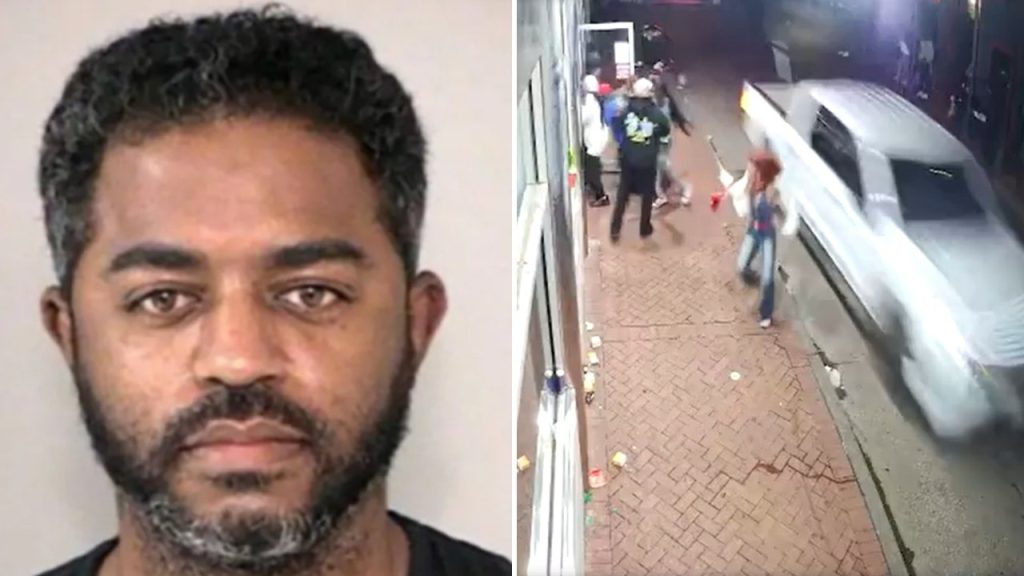Surveillance footage from Bourbon Street shows terror suspect Shamsud-Din Jabbar speeding his electric Ford F-150 Lightning pickup truck toward a crowd of New Year’s revelers, ultimately killing 14 people and engaging in a shootout with police. This terrorist attack highlighted the devastating impact of vehicles used for malicious purposes and led to concerns about the increase in this tactic worldwide. Police departments are now adapting their strategies to address terrorism more quickly and effectively at a local level without relying solely on federal support. The quiet nature of electric vehicles like the one used by Jabbar allowed him to potentially take his victims by surprise, contributing to the tragedy.
The attack on Bourbon Street also raised questions about security measures in the area during large events. Surveillance footage showed Jabbar circumventing a police vehicle blockade due to a barrier not being upright, which led to the tragic incident. While some businesses had installed temporary barriers to block traffic, mistakes were made, and vulnerabilities were exposed. The incident highlighted the challenges of securing large events completely and made it clear that security protocols must constantly be evaluated and improved to prevent such attacks in the future.
Eyewitness accounts from individuals who experienced the attack on Bourbon Street described chaos and terror as bodies were strewn across the area and people ran for their lives. The community in New Orleans was deeply affected by the tragedy, with many expressing shock and heartbreak over the loss of life. The incident changed the atmosphere in the French Quarter, leaving residents and business owners feeling concerned about the safety of the area and the potential for future attacks. The reopening of Bourbon Street was a somber moment for many as they grappled with the aftermath of the violence.
Authorities determined that Jabbar was motivated by ISIS and acted alone, posting videos on Facebook expressing his support for the terrorist group before the attack. The presence of improvised explosive devices (IEDs) further underscored the malicious intent behind his actions and the potential for additional violence. The investigation into the incident continued as law enforcement officials sought to understand the extent of Jabbar’s radicalization and any potential ties to other extremist groups. The tragedy highlighted the ongoing threat posed by terrorism and the need for vigilance in combating such threats in the future.
The New Orleans terror attack prompted discussions about the evolving tactics of terrorists and the need for communities to be prepared for such incidents. The use of vehicles as weapons has become increasingly common among terrorists worldwide, posing unique challenges for law enforcement and security experts. Local police departments are adapting their approaches to better respond to these threats and prevent similar attacks from occurring in the future. The incident also served as a reminder of the importance of effective security measures during large events to protect the public and prevent tragedies like the one that occurred on Bourbon Street.
As the community in New Orleans mourned the victims of the terror attack, individuals like Kevin Scott expressed their sorrow and called for unity in the face of tragedy. The emotional impact of the violence was profound, with many struggling to come to terms with the loss of life and the senseless nature of the attack. The resilience of the community was evident as residents and business owners worked to move forward and rebuild in the wake of the tragedy. The incident served as a stark reminder of the threat posed by terrorism and the need for continued efforts to prevent such acts of violence in the future.













